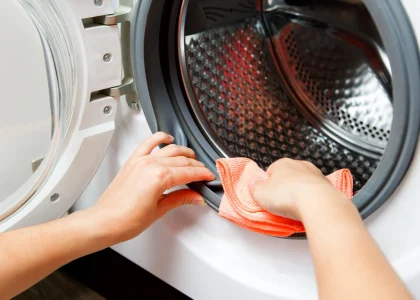
In 2023, the global smart insole market is predicted to hit a value of $165 million. From 2023 to 2033, it’s projected to see a steady growth with a compound annual growth rate (CAGR) of 9.8%, ultimately reaching US$461.43 million by 2033.
Also the smart insole is known as a gait analysis equipment embedded along the footwear soles that continuously measures the movement of a person. While cheap sensors are employed, the gait features is calculated and continuously transmitted to such devices as smart watches and also mobile phones.
Besides, the tendency of healthcare market to use smart insole for monitoring the patient’s motion creates a great opportunity that will unleash real possibilities. Growing health consciousness among the population in the advanced economies such as North America and Europe is poised to drive the market growth over long-term.
Request Sample Report: https://www.futuremarketinsights.com/reports/sample/rep-gb-11967
Additionally, the smart insole used by the sports industries for using multiple sensors on the athlete’s footwear to monitor gait features is likely to propel and the smart insole market over forecast period.
Rising demand from sports and health care applications has positively impacted smart insole market. Attributed to aforementioned scenarios, global smart insole market is forecast to witness absolute growth at a higher digit CAGR between 2020 and 2030.
Growth Drivers:
- Rising Health Awareness: Increasing awareness about health and fitness has led to a growing interest in tracking personal health metrics, including gait analysis and posture correction, which smart insoles can provide. This trend is driving the adoption of smart insoles among consumers.
- Technological Advancements: Continuous advancements in sensor technology, wireless connectivity, and data analytics have enhanced the capabilities of smart insoles. These advancements enable real-time monitoring of foot health, sports performance, and rehabilitation progress, thereby driving market growth.
- Demand from Sports and Fitness Sector: Athletes and fitness enthusiasts are increasingly leveraging smart insoles to monitor their performance metrics such as stride length, foot pressure distribution, and running cadence. The integration of these insights into training regimes and injury prevention strategies is fueling the demand for smart insoles in the sports and fitness sector.
- Medical Applications: Smart insoles have significant potential in the medical field for diagnosing and managing various foot-related conditions such as diabetic foot ulcers, plantar fasciitis, and arthritis. Healthcare professionals are increasingly incorporating smart insoles into treatment plans for better patient monitoring and outcomes.
- Growing Aging Population: With a globally aging population, there is a rising prevalence of foot-related health issues such as neuropathy and balance disorders among the elderly. Smart insoles offer solutions for early detection, prevention, and management of these conditions, driving their adoption among aging populations.
Industry Restraints:
- Cost Constraints: The cost of smart insoles, especially those equipped with advanced features and high-quality sensors, can be relatively high. This cost factor may limit their adoption among budget-conscious consumers and healthcare facilities, thereby restraining market growth.
- Limited Battery Life: Many smart insoles rely on battery-powered sensors and connectivity modules, which may have limited battery life. Users may find frequent charging or battery replacement cumbersome, impacting the overall user experience and adoption of smart insoles.
- Data Privacy and Security Concerns: Smart insoles collect sensitive personal health data, including gait patterns and activity levels. Concerns about data privacy and security breaches, especially with the transmission and storage of this data, may deter some consumers from using smart insoles, thus acting as a restraint on market growth.
- Comfort and Fit Issues: Ensuring the comfort and proper fit of smart insoles, especially for long-term use, can be challenging. Poorly designed or ill-fitting insoles may cause discomfort or even exacerbate existing foot problems, leading to dissatisfaction among users and hindering market adoption.
Smart Insole Market: Regional Outlook
From regional perspective, North America holds largest market share in global smart insole market. Increase in healthcare spending per capita in United States has fueled the demand for smart insoles.
For instance, according to United States National Health Expenditure Accounts (NHEA), U.S. health care spending increased by around 4.6 percent in 2018, reaching US$ $3.6 trillion or US$11,172 per person, 3.8 trillion in 2019 which is expected to increase by US$ 4.01 trillion in 2020.
As per CMS estimates the healthcare spending is projected to rise by US$ 6 trillion till 2028. This provides an immense potential for smart insoles market growth in the healthcare arena.
Europe accounts for more than quarter of the demand share of smart insole market. Growing awareness of improving health and healthcare infrastructure in the region is set to encourage the demand for smart insoles over the forecast period. Followed by Europe,
Request the Full Report Methodology Now!
https://www.futuremarketinsights.com/request-report-methodology/rep-gb-11967
East Asia accounts for less than one-tenth of the demand share of smart insole. Region portrays an increasing market potential owing to increasing healthcare spending. South Asia & Oceania, Latin America and Middle East & Africa account for minute share owing to the limited utilization of smart insole in these region
Smart Insole Market: Key Players
Key players in global smart insole market are
- Lechal
- Kinematix
- Wiiv Wearables
- Digitsole
- ReTiSense
- Dr. Scholl’s (Bayer)
- Implus
- Adidas
- FootLogger
- Sidas
- HCi Viocare Technologies
- Moticon
- Bonbouton
Global smart insole market is partially fragmented in nature with presence of many international players. Key players in market are focused towards expansions through research & development. These players aim to provide a scattering range of smart insole suited for different purposes.
For instance, in March 2020, Google, Adidas, and EA collaborated on a new smart insole which is used for video gaming application.
The research report presents a comprehensive assessment of the smart insole market and contains thoughtful insights, facts, historical data, and statistically supported and industry-validated market data. It also contains projections using a suitable set of assumptions and methodologies.
The Smart Insole Market Report Covers Exhaustive Analysis On
- Market Segments
- Market Dynamics
- Market Size & Demand
- Current Trends/Issues/Challenges
- Competition & Companies involved
- Technology
- Value Chain
The smart insole report is a compilation of first-hand information, qualitative and quantitative assessment by industry analysts, inputs from industry experts, and industry participants across the value chain. The smart insole report provides an in-depth analysis of parent market trends, macroeconomic indicators, and governing factors along with market attractiveness as per segments. The smart insole report also maps the qualitative impact of various market factors on market segments and geographies.
Gain Immediate Access to Detailed Market Insights: https://www.futuremarketinsights.com/checkout/11967
Segmentation analysis of smart insole Market
The global Smart insole market is bifurcated into four major segments: insole type, material type, end-use and region.
Insole Type
- Comfort Insoles
- Molded Insoles
- Custom Orthotics
Material Type
- Polypropylene
- Leather
- Other
By End-use
- Sports
- HealthCare
- Others
The Smart Insole Market Regional Analysis Includes
- North America (U.S., Canada)
- Latin America (Mexico, Brazil, Argentina, Chile, Peru)
- Europe (Germany, Italy, France, U.K, Spain, BENELUX, Nordic, Russia, Poland & CIS)
- East Asia (China, Japan, South Korea)
- South Asia (India, Malaysia, Indonesia, Australia, New Zealand & Thailand)
- Middle East & Africa (GCC Countries, South Africa, Turkey)
Author
Sneha Varghese (Senior Consultant, Consumer Products & Goods) has 6+ years of experience in the market research and consulting industry. She has worked on 200+ research assignments pertaining to Consumer Retail Goods.
Her work is primarily focused on facilitating strategic decisions, planning and managing cross-functional business operations, technology projects, and driving successful implementations. She has helped create insightful, relevant analysis of Food & Beverage market reports and studies that include consumer market, retail, and manufacturer research perspective. She has also been involved in several bulletins in food magazines and journals.
About Future Market Insights (FMI)
Future Market Insights, Inc. (ESOMAR certified, recipient of the Stevie Award, and a member of the Greater New York Chamber of Commerce) offers profound insights into the driving factors that are boosting demand in the market. FMI stands as the leading global provider of market intelligence, advisory services, consulting, and events for the Packaging, Food and Beverage, Consumer, Technology, Healthcare, Industrial, and Chemicals markets. With a vast team of ~400 analysts worldwide, FMI provides global, regional, and local expertise on diverse domains and industry trends across more than 110 countries.
Contact Us:
Future Market Insights Inc.
Christiana Corporate, 200 Continental Drive,
Suite 401, Newark, Delaware – 19713, USA
T: +1-845-579-5705
For Sales Enquiries: sales@futuremarketinsights.com
Website: https://www.futuremarketinsights.com
LinkedIn| Twitter| Blogs | YouTube




